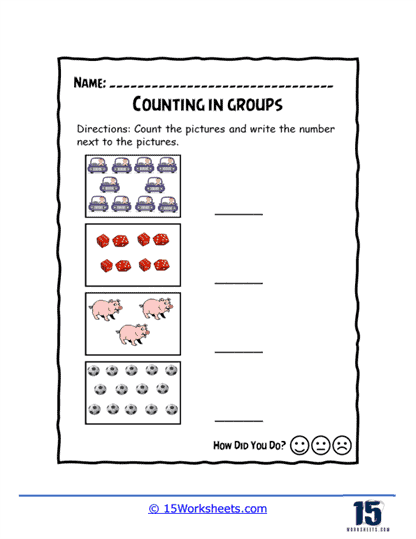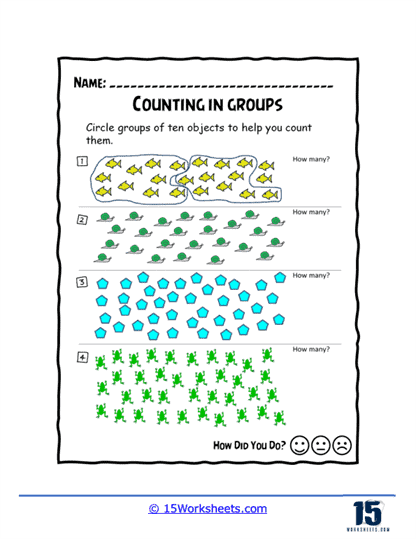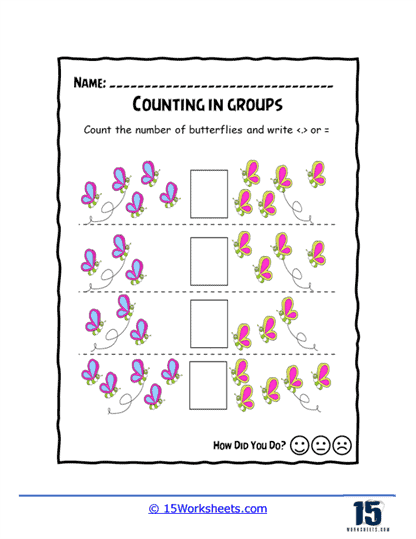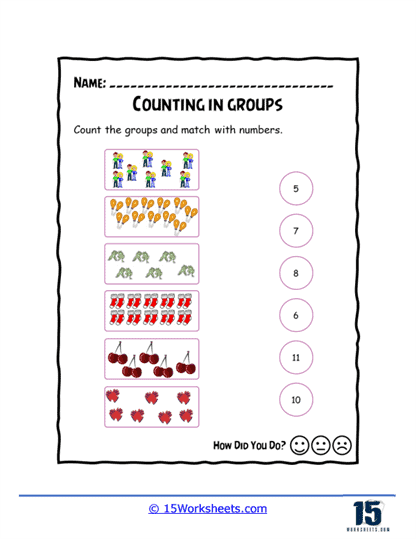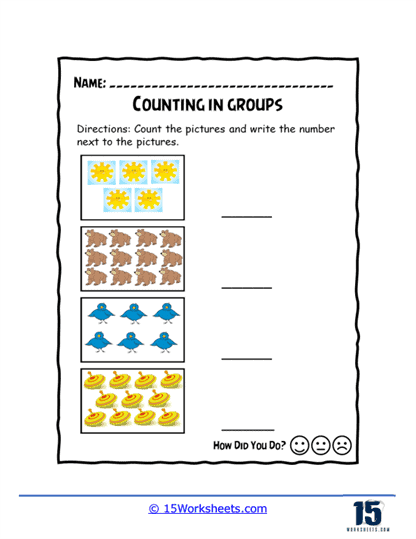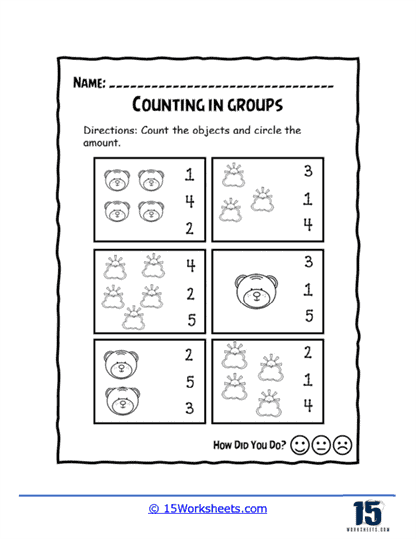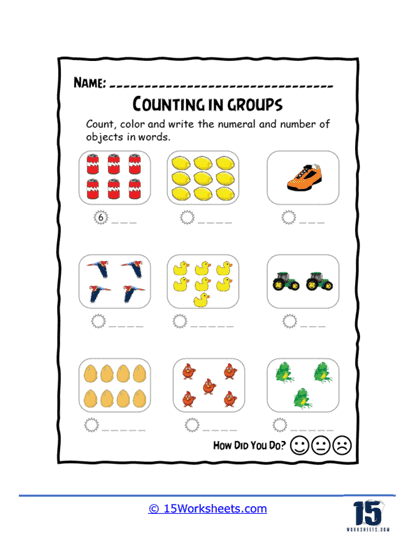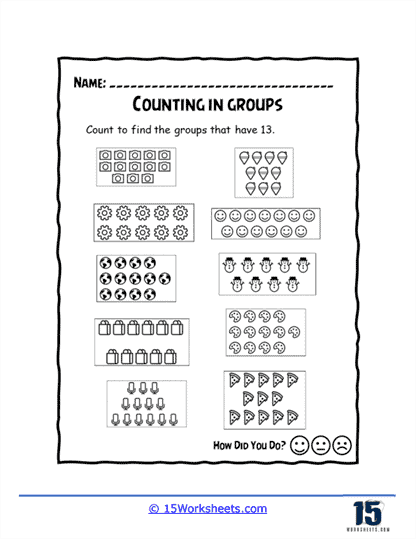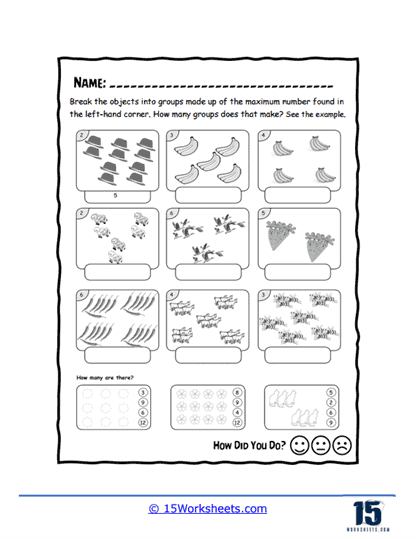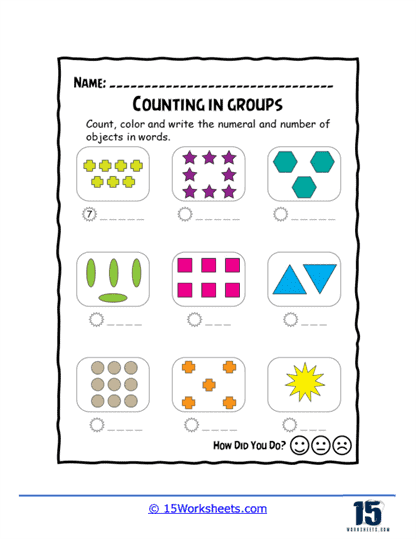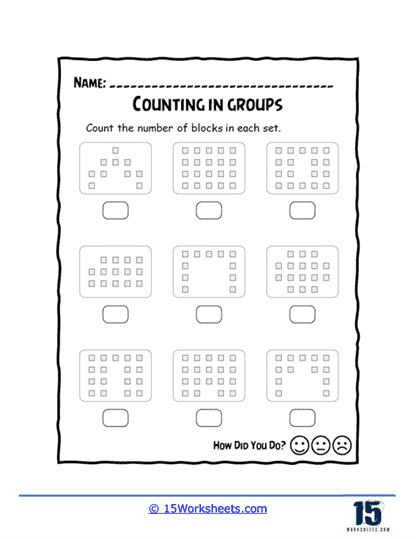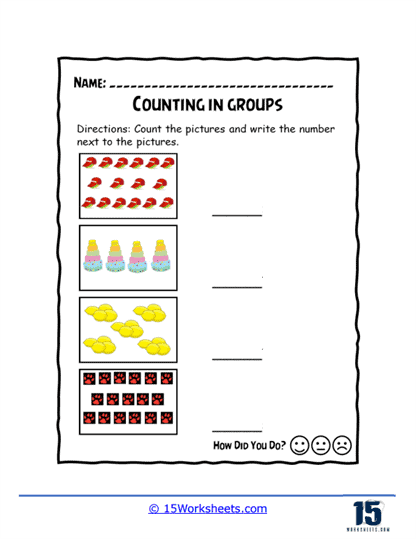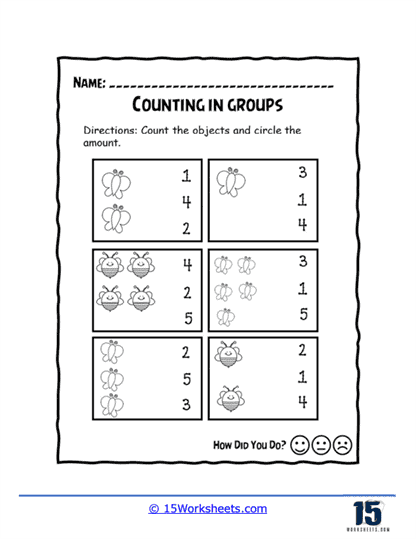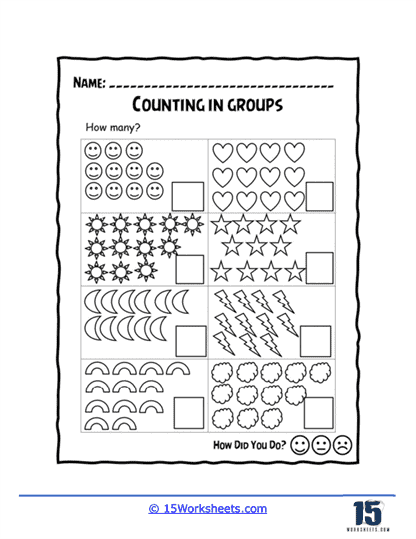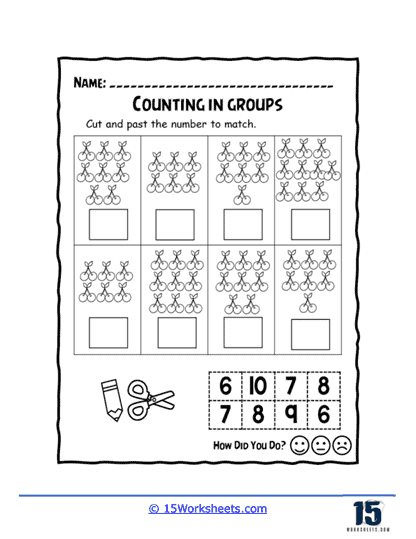Counting in Groups Worksheets
How to Teach Kids to Count Items in Groups
Teaching children to count items in groups is a fundamental concept that builds the basis for multiplication and division, as well as helping children to develop their problem-solving skills. Here are some steps to help you teach this concept effectively:
Start with Counting and Groups
Before moving to group counting, ensure that the child can count objects individually. Use physical items, like toys or fruits, and have them count these objects one by one.
Once they’ve mastered counting single items, introduce the concept of groups. For example, you can use muffin trays or cupcake pans and place items like marbles or beads into each cup. You can then explain that each cup is a “group.”
After they understand the concept of groups, you can start counting items by groups. For instance, if you have three cups with two marbles each, you can explain that there are three groups of two marbles. You can then count the groups: 2, 4, 6. Reinforce that this is the same as 2+2+2.
Use Drawings and Real-life Examples
Draw pictures or use manipulatives to help visualize the groups. For example, if you’re teaching the child to count two groups of four apples, you could draw two trees with four apples each and count them together.
Incorporate group counting into everyday tasks. For instance, setting the table for dinner can be an opportunity to count groups (four plates, four spoons, four forks, etc.).
Keep practicing the concept with different objects and group sizes. The more they practice, the better they will get at understanding and using this concept.
Expand to Other Skills
As the child becomes more comfortable with the concept, gradually increase the group size and the number of groups. Once the child has mastered group counting, you can introduce multiplication as a faster way of counting groups.
You can make learning fun with counting games and activities. This will not only make learning enjoyable, but it will also improve their ability to remember and understand the concept better.
Learning takes time, and it’s essential to be patient and encouraging during this process. Celebrate their successes to boost their confidence and motivation.
How Do You Connect This Skill to Sorting?
Connecting counting items in groups to sorting can be a wonderful way to make learning more engaging and practical for children. Both skills involve recognizing patterns and organizing information. Here’s how you can bridge the two:
Start by introducing the concept of sorting. Use real-life objects or pictures and sort them based on various attributes like color, size, shape, etc. For example, you could sort a pile of fruits into separate groups based on their type.
Count, Compare, Group
Count individual groups: After sorting, ask your child to count the items in each group. This step combines the concept of grouping and counting. Ask your child to compare the groups. Which group has more or fewer items? This is a crucial step in developing a child’s understanding of comparison and quantities.
Now, you can introduce group counting with sorted objects. For example, if you have sorted objects into four groups with three objects in each, you can start counting by groups. Count 3, 6, 9, 12.
Another great activity is to ask your child to sort groups based on their count. For example, create multiple groups with different numbers of objects, and ask them to sort the groups from the one with the fewest objects to the one with the most.
Challenge your child with problem-solving activities that involve sorting and group counting. For instance, you can give them a problem where they have to distribute objects equally into groups and then count the number of objects in each group.

